Whether you’re a pet parent looking to enhance your living space or a plant enthusiast concerned about your furry friends’ safety, selecting the right indoor vines requires careful consideration. You’ll discover that certain climbing and trailing plants offer both aesthetic appeal and peace of mind, combining lush greenery with pet-safe properties. From the cascading tendrils of Swedish Ivy to the architectural grace of the Parlor Palm, these ten varieties will transform your home into a verdant sanctuary while keeping your companions protected.
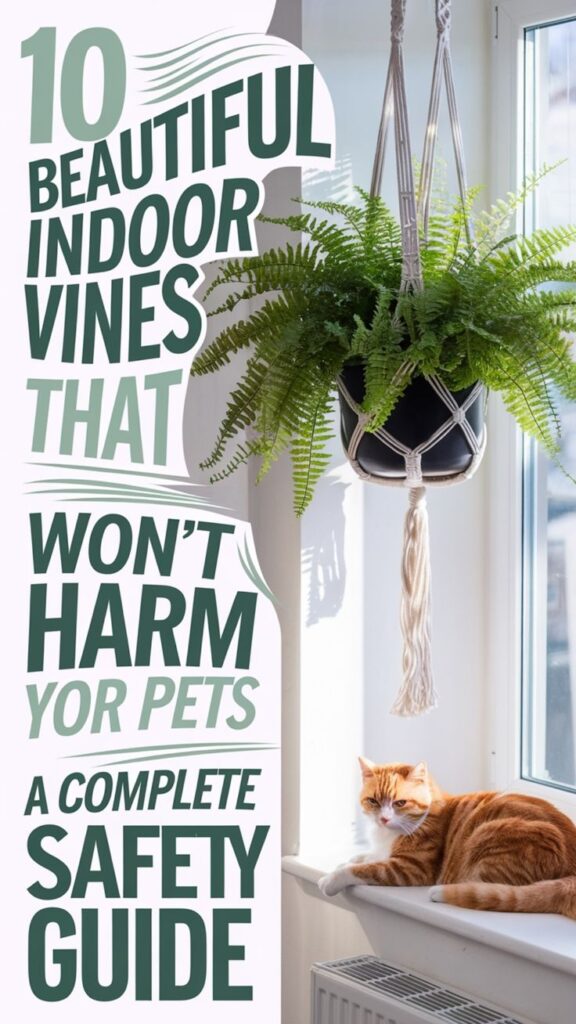
Contents
- 1 Swedish Ivy (Plectranthus Verticillatus)
- 2 Spider Plant (Chlorophytum Comosum)
- 3 Boston Fern (Nephrolepis Exaltata)
- 4 Purple Passion Vine (Gynura Aurantiaca)
- 5 Parlor Palm (Chamaedorea Elegans)
- 6 Peperomia (Peperomia Species)
- 7 Hoya (Hoya Carnosa)
- 8 Prayer Plant (Maranta Leuconeura)
- 9 Baby’s Tears (Soleirolia Soleirolii)
- 10 Growing and Care Tips for Pet-Safe Vines
Swedish Ivy (Plectranthus Verticillatus)
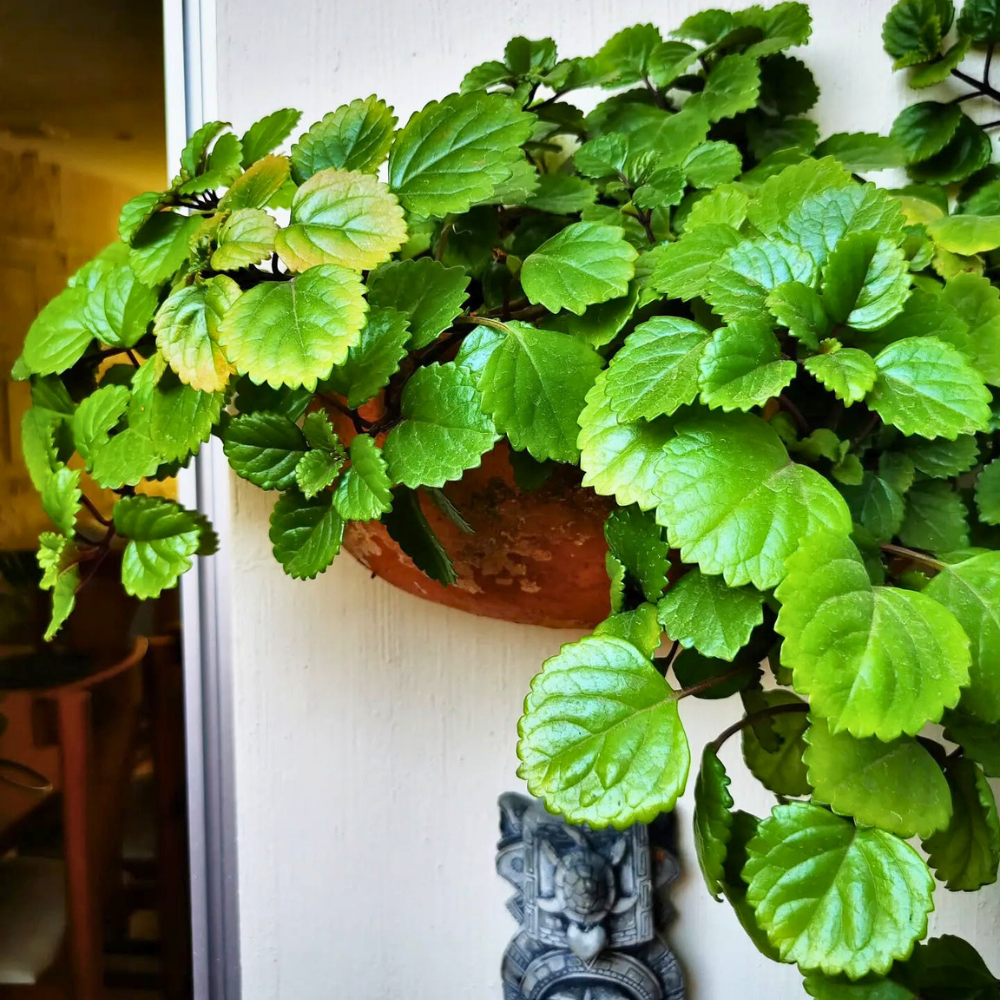
Swedish Ivy, despite its name, is not actually an ivy but rather a trailing plant from the mint family native to South Africa. This low-maintenance houseplant features thick, glossy, rounded leaves with scalloped edges that cascade beautifully from hanging baskets or climb when provided support. Its rapid growth and resilient nature make it an excellent choice for beginners, while its non-toxic properties guarantee safety around pets.
- Light: Bright, indirect light; can tolerate moderate shade but avoids direct sunlight
- Water: Allow top inch of soil to dry between waterings; reduce watering in winter
- Soil: Well-draining potting mix with good organic content
- Temperature: 60-75°F (15-24°C)
- Humidity: Average household humidity; tolerates dry conditions
- Fertilizer: Feed monthly with balanced liquid fertilizer during growing season
- Propagation: Easily propagates from stem cuttings in water or soil
Spider Plant (Chlorophytum Comosum)
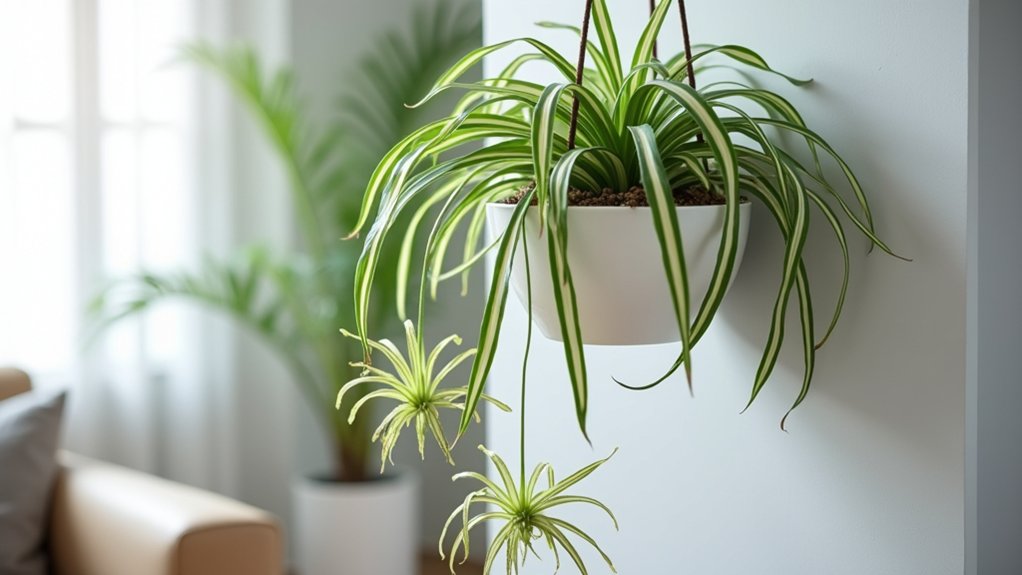
Spider Plants, while technically not vines, are often grown in hanging baskets where their arching stems create a cascading, vine-like appearance. These popular houseplants feature long, narrow leaves with distinctive white stripes and produce small plantlets, or “babies,” on long stems that dangle from the mother plant. They’re particularly valued for their air-purifying qualities and safe nature around pets and children, making them an excellent choice for homes with animals.
- Light: Thrives in bright, indirect sunlight; can tolerate lower light conditions but may lose variegation; avoid direct sun which can burn leaves
- Water: Keep soil moderately moist but not waterlogged; allow top inch of soil to dry between waterings; tolerates occasional drought
- Soil: Well-draining potting mix with good aeration; standard houseplant potting soil works well
- Humidity: Adapts to average home humidity; benefits from occasional misting
- Temperature: Comfortable in normal room temperatures between 60-75°F (15-24°C)
- Fertilizer: Feed with balanced liquid fertilizer every 2-3 months during growing season
Boston Fern (Nephrolepis Exaltata)

Though not technically a vine, the Boston Fern is a popular hanging plant that creates a cascading effect similar to vines, making it an excellent choice for pet owners seeking safe indoor greenery. With its arching fronds of small, feather-like leaves, this classic houseplant adds elegant texture and a natural air-purifying quality to any room while being completely non-toxic to cats and dogs.
- Light: Bright, indirect light; avoid direct sunlight which can scorch leaves
- Water: Keep soil consistently moist but not waterlogged; mist regularly to maintain humidity
- Soil: Well-draining, rich potting mix with high organic content
- Temperature: 60-75°F (16-24°C)
- Humidity: High humidity (50% or higher)
- Fertilizer: Light feeding with balanced fertilizer during growing season
- Container: Pot with good drainage holes; ideal for hanging baskets
- pH: 5.0-5.5 (slightly acidic)
Purple Passion Vine (Gynura Aurantiaca)
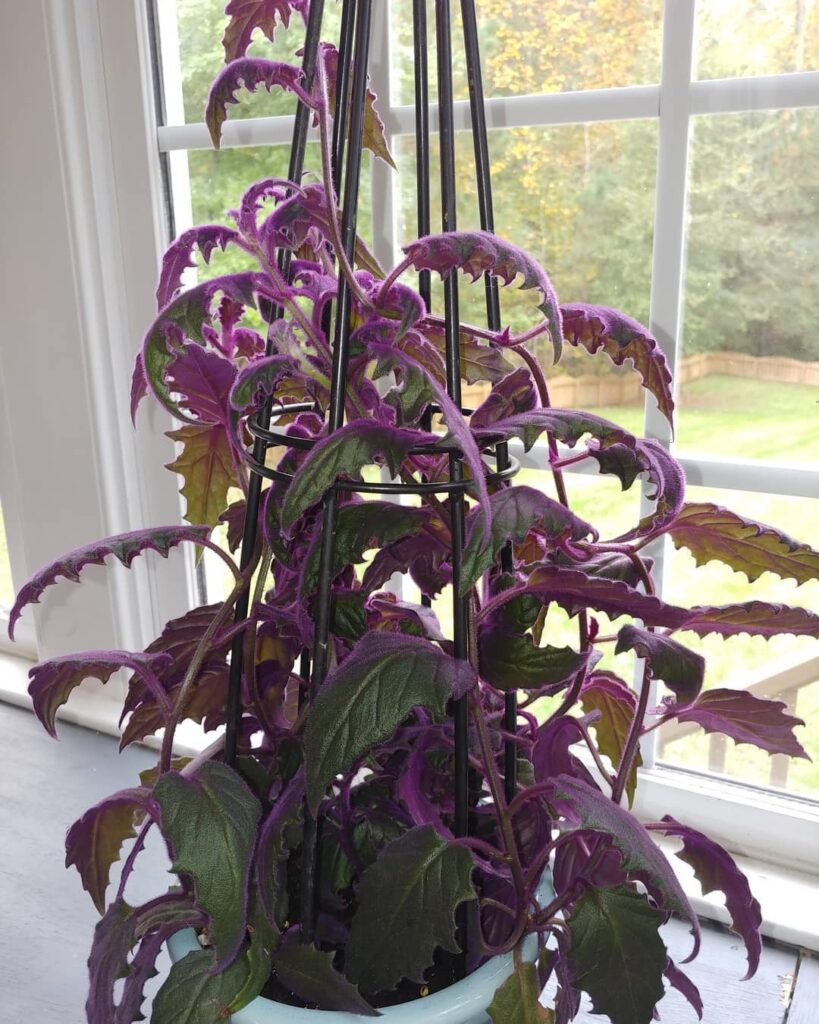
The Purple Passion Vine, or Gynura aurantiaca, is a fascinating indoor plant known for its distinctive velvety leaves covered in fine purple hairs that give it a shimmering, iridescent appearance. This trailing vine can grow up to 3 feet long and features green leaves with a purple overlay that becomes more pronounced in bright light. While technically not a true vine, its trailing growth habit makes it perfect for hanging baskets or climbing supports, and its unique texture adds visual interest to any indoor space.
- Light: Bright, indirect sunlight; avoid direct sun which can fade the purple coloring
- Water: Keep soil consistently moist but not waterlogged; water when top inch of soil feels dry
- Soil: Well-draining, rich potting mix with added organic matter
- Humidity: Moderate to high humidity levels; benefits from regular misting
- Temperature: 60-75°F (15-24°C)
- Fertilizer: Feed monthly during growing season with balanced liquid fertilizer
- Pruning: Trim regularly to maintain shape and promote bushier growth
Parlor Palm (Chamaedorea Elegans)

The Parlor Palm, despite not being a true vine, is often grouped with indoor climbing plants due to its elegant, arching fronds that can create a similar vertical aesthetic. This compact palm species reaches heights of 2-6 feet indoors and features delicate, feather-like green foliage that adds a tropical touch to any space. Its non-toxic nature makes it completely safe for homes with pets and children, while its air-purifying qualities and adaptability to indoor conditions have made it a longtime favorite among houseplant enthusiasts.
- Light: Thrives in moderate to bright indirect light; can tolerate low light conditions but may grow slower
- Water: Keep soil consistently moist but not waterlogged; water when top inch of soil feels dry
- Soil: Well-draining potting mix rich in organic matter
- Humidity: Prefers moderate to high humidity; benefits from regular misting
- Temperature: Ideal range between 65-80°F (18-27°C)
- Fertilizer: Feed with balanced liquid fertilizer every 2-3 months during growing season
- Potting: Prefers to be slightly root-bound; repot every 2-3 years
Peperomia (Peperomia Species)
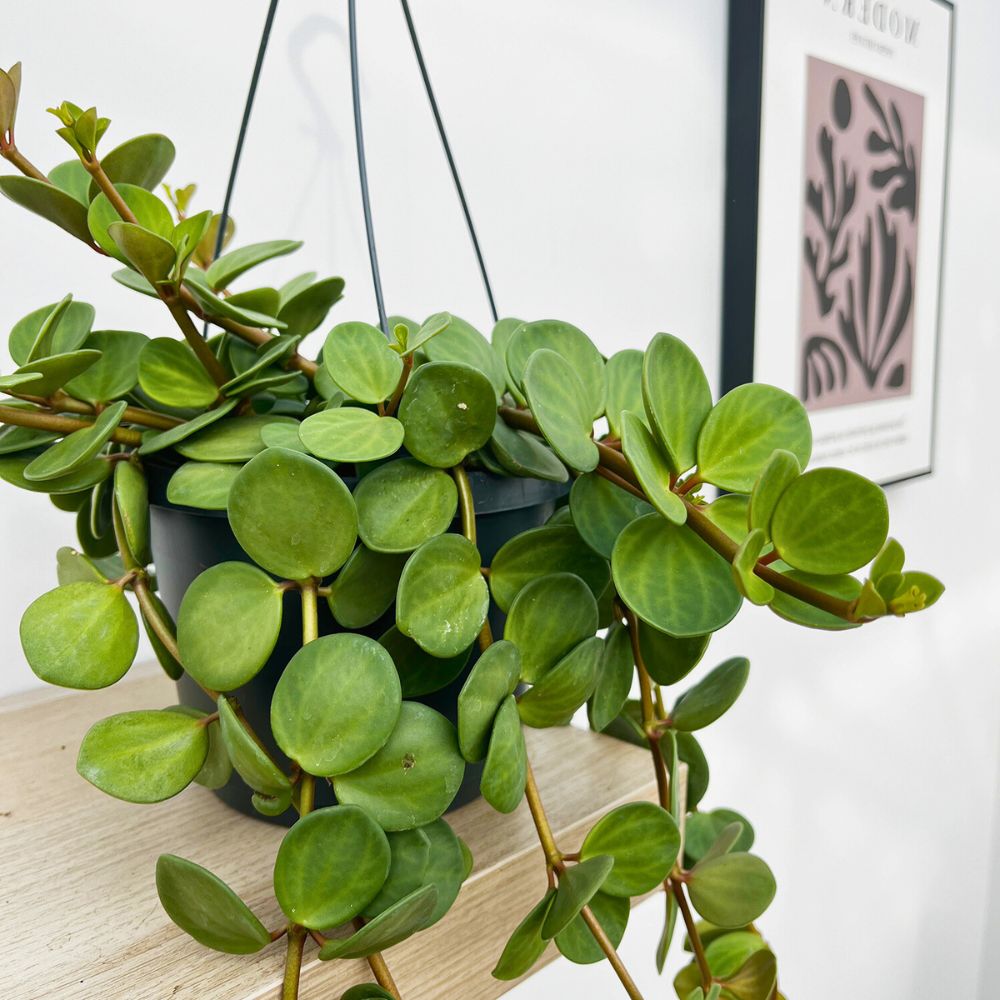
Peperomia is a diverse genus of compact, trailing plants that make excellent indoor vines for pet owners, as they are non-toxic to cats and dogs. These small, decorative plants feature thick, fleshy leaves that come in various shapes, colors, and patterns, from heart-shaped to elongated forms, and can range from solid green to variegated patterns. While not typically considered true vines, several peperomia varieties exhibit a trailing growth habit that makes them perfect for hanging baskets or climbing displays in pet-friendly spaces.
- Light: Bright, indirect light; can tolerate moderate light conditions but avoid direct sunlight
- Water: Allow top inch of soil to dry between waterings; susceptible to root rot if overwatered
- Soil: Well-draining, loose potting mix with good aeration
- Humidity: Moderate to high humidity (40-50%)
- Temperature: 65-75°F (18-24°C)
- Fertilizer: Light feeding with balanced fertilizer during growing season
- Pruning: Minimal pruning needed; remove damaged or leggy growth as needed
Hoya (Hoya Carnosa)

Hoya Carnosa, commonly known as Wax Plant or Porcelain Flower, is a trailing vine with thick, waxy leaves and clusters of star-shaped, fragrant flowers. This low-maintenance houseplant is non-toxic to pets and can grow several feet long when properly supported. Its succulent-like leaves store water, making it relatively drought-tolerant, and its vining nature makes it perfect for hanging baskets or climbing trellises.
- Light: Bright, indirect light; can tolerate some direct morning sun
- Water: Allow top 2-3 inches of soil to dry between waterings; reduce watering in winter
- Soil: Well-draining, airy potting mix with orchid bark or perlite
- Humidity: Moderate to high humidity (50-60%)
- Temperature: 60-80°F (15-27°C)
- Fertilizer: Feed monthly during growing season with balanced houseplant fertilizer
- Support: Provide trellis, pole, or hanging basket for climbing
- Pruning: Minimal pruning needed; don’t remove spent flower spurs as they produce new blooms
Prayer Plant (Maranta Leuconeura)
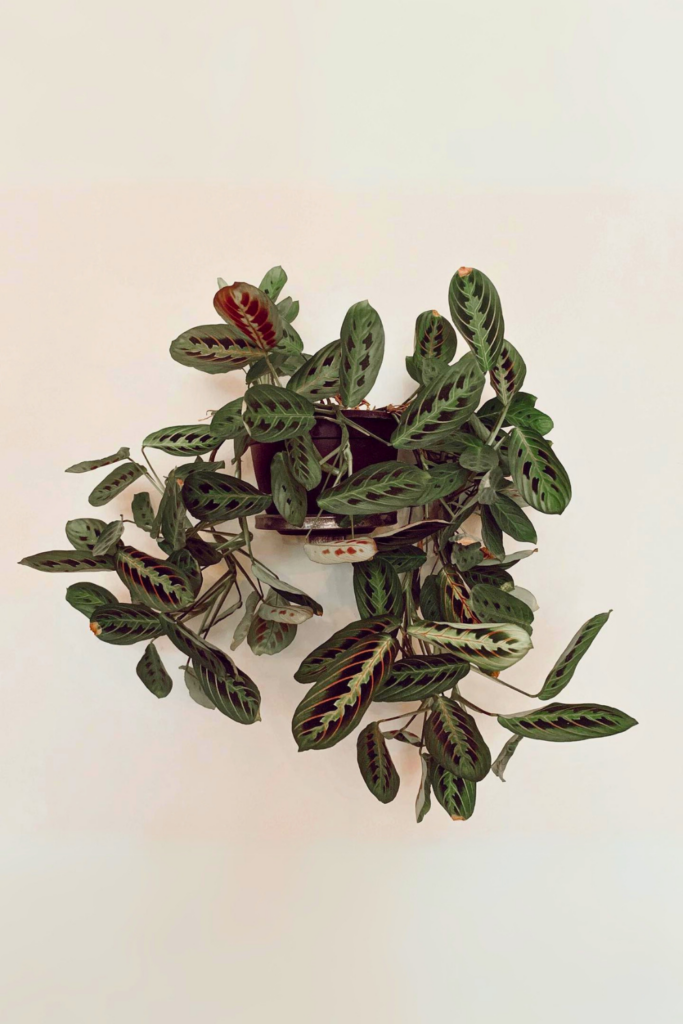
The Prayer Plant is a low-growing, spreading vine known for its distinctive oval-shaped leaves marked with intricate patterns of dark green, yellow, red, and cream. Its common name comes from the unique daily movement of its leaves, which fold upward at night like hands in prayer and unfold again in the morning. This tropical beauty makes an excellent hanging basket or terrarium plant, with its compact size rarely exceeding 12 inches in height and its trailing stems creating an attractive cascading effect.
- Light: Bright to moderate indirect light; avoid direct sunlight which can fade leaf patterns
- Water: Keep soil consistently moist but not waterlogged; water when top inch of soil feels dry
- Humidity: High humidity (50-60%); mist regularly or use a humidity tray
- Temperature: 65-80°F (18-27°C); protect from cold drafts
- Soil: Well-draining, rich potting mix with high organic content
- Fertilizer: Feed monthly during growing season with balanced liquid fertilizer
- pH: 5.5-6.0
Baby’s Tears (Soleirolia Soleirolii)
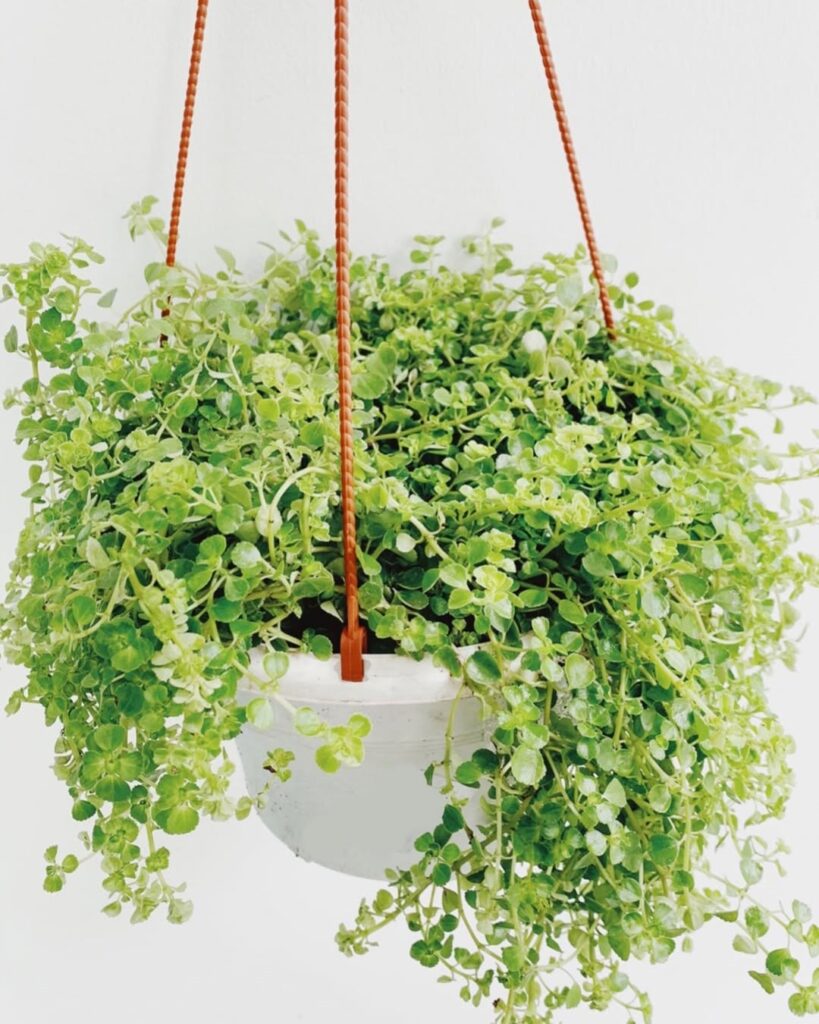
Baby’s Tears is a delicate, creeping vine known for its tiny round leaves and dense, mat-forming growth habit. This pet-safe plant creates a soft, emerald carpet effect as it spreads, making it ideal for terrariums, hanging baskets, or as groundcover in shaded indoor spaces. Its dainty appearance and gentle trailing nature have made it a popular choice among indoor gardeners, while its non-toxic properties guarantee it’s safe for homes with pets.
- Light: Bright to moderate indirect light; avoid direct sunlight
- Water: Keep soil consistently moist but not waterlogged; mist regularly to maintain humidity
- Soil: Well-draining, rich potting mix with high organic content
- Temperature: 60-75°F (15-24°C)
- Humidity: High humidity (50% or higher)
- Fertilizer: Feed monthly with diluted balanced fertilizer during growing season
- Container: Shallow containers with good drainage
- pH: Slightly acidic to neutral (6.0-7.0)
Growing and Care Tips for Pet-Safe Vines
Growing pet-safe indoor vines requires consistent attention to their specific needs while ensuring they remain non-toxic to curious pets. These plants typically need regular maintenance including proper pruning to control growth, consistent watering schedules, and occasional fertilizing during the growing season. While each species has its own specific requirements, most pet-friendly vines can adapt well to indoor environments when their basic care needs are met.
- Light: Bright, indirect sunlight is ideal for most indoor vines; avoid direct sun which can scorch leaves; north or east-facing windows work well
- Water: Keep soil consistently moist but not waterlogged; water when top 1-2 inches of soil feels dry; reduce watering in winter
- Soil: Well-draining potting mix rich in organic matter; pH between 6.0-7.0
- Humidity: Moderate to high humidity (50-60%); mist leaves regularly or use a humidity tray
- Temperature: Average room temperatures between 65-75°F (18-24°C); avoid cold drafts
- Fertilizer: Feed monthly during growing season with balanced liquid fertilizer at half strength
- Container: Use pots with drainage holes; select containers that provide adequate space for root growth
